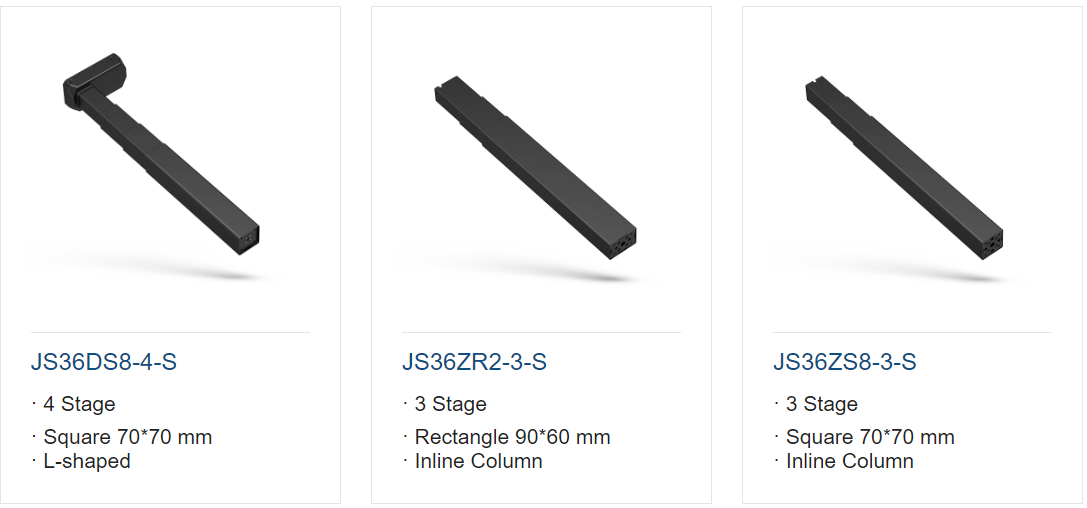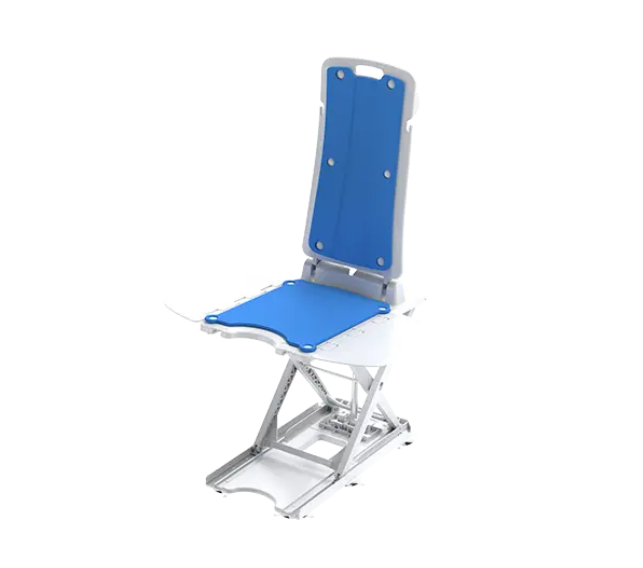Definition of Lifting Columns
Lifting columns are mechanical devices designed to vertically raise or lower loads in a controlled manner. They typically consist of a series of telescoping sections that extend and retract to adjust the height of the platform or load. Lifting columns are commonly used in various applications where precise height adjustment is required, such as ergonomic workstations, medical equipment, industrial automation, and automotive assembly lines. These devices can be operated manually, hydraulically, or electrically, providing versatility and adaptability to different environments and tasks. Lifting columns play a crucial role in improving efficiency, ergonomics, and safety in numerous industries by enabling the customization of workspaces and equipment according to specific requirements.
Benefits of Lifting Columns:
1. Enhanced Ergonomics and Comfort: Lifting columns allow users to adjust the height of work surfaces, desks, or equipment to their preferred ergonomic position, reducing strain and fatigue during prolonged use.
2. Precise Height Adjustment: With precise height adjustment capabilities, lifting columns enable users to achieve exact positioning, ensuring optimal working conditions and improved productivity.
3. Space-saving Design: Lifting columns feature a compact and space-saving design, making them suitable for use in environments where space is limited. Their vertical movement allows for efficient utilization of available space.
4. Increased Productivity and Efficiency: By providing customizable height adjustment options, lifting columns contribute to increased productivity and efficiency in various applications. Users can easily tailor workstations and equipment to their specific needs, resulting in improved workflow and performance.
Factors to Consider When Choosing Lifting Columns:
1. Load Capacity: Ensure that the lifting columns have sufficient load capacity to support the weight of the intended application, including any additional equipment or accessories.
2. Speed and Stroke Length: Consider the desired speed and stroke length of the lifting columns to accommodate the required vertical movement and adjustment range for the application.
3. Control Options (Manual vs. Electric): Decide whether manual or electric control options are preferable based on user preferences, convenience, and the level of automation required.
4. Integration with Existing Systems: Assess compatibility and integration capabilities with existing systems or equipment to ensure seamless operation and functionality.
5. Durability and Reliability: Choose lifting columns that are built with durable materials and components to withstand continuous use and provide long-term reliability in various operating environments.
Conclusion
Choosing the right lifting column for your specific application is crucial for several reasons:
Precision and Efficiency: The right lifting column ensures precise height adjustment, allowing you to achieve the optimal ergonomic position for your equipment or workspace. This precision contributes to increased efficiency and productivity, as users can easily adjust the height to their preferences with minimal effort.
Safety and Comfort: Lifting columns with appropriate load capacities and speed settings enhance safety by providing stable and controlled vertical movement. This prevents accidents, injuries, and equipment damage, promoting a safer and more comfortable working environment for users.
Versatility and Adaptability: Different applications may require lifting columns with varying load capacities, stroke lengths, and control options. Choosing the right lifting column ensures that it can adapt to the specific requirements of your application, whether it involves adjusting workstations, lifting heavy machinery, or supporting medical equipment.
Longevity and Reliability: Investing in high-quality lifting columns ensures long-term reliability and durability. Quality components and construction materials contribute to extended service life, reducing maintenance costs and downtime associated with equipment failures or malfunctions.
Integration and Compatibility: The right lifting column should seamlessly integrate with existing systems or equipment, allowing for easy installation and operation. Compatibility with control systems, automation interfaces, and mounting configurations simplifies integration into your workflow or application setup.
Overall, selecting the right lifting column tailored to your specific needs and requirements maximizes performance, safety, and user satisfaction, ultimately leading to improved productivity and operational efficiency.
For more information about lifting column, please visit our website https://www.jiecang.com/


